Year 2
The proficiency strands understanding, fluency, problem-solving and reasoning are an integral part of mathematics content across the three content strands: number and algebra, measurement and geometry, and statistics and probability. The proficiencies reinforce the significance of working mathematically within the content and describe how the content is explored or developed. They provide the language to build in the developmental aspects of the learning of mathematics. The achievement standards reflect the content and encompass the proficiencies.
At this year level:
- understanding includes connecting number calculations with counting sequences, partitioning and combining numbers flexibly and identifying and describing the relationship between addition and subtraction and between multiplication and division
- fluency includes readily counting numbers in sequences, using informal units iteratively to compare measurements, using the language of chance to describe outcomes of familiar chance events and describing and comparing time durations
- problem-solving includes formulating problems from authentic situations, making models and using number sentences that represent problem situations, and matching transformations with their original shape
- reasoning includes using known facts to derive strategies for unfamiliar calculations, comparing and contrasting related models of operations and creating and interpreting simple representations of data.
(source: www.australiancurriculum.edu.au)
Achievement Standard
By the end of Year 2, students recognise increasing and decreasing number sequences involving 2s, 3s and 5s. They represent multiplication and division by grouping into sets. They associate collections of Australian coins with their value. Students identify the missing element in a number sequence. Students recognise the features of three-dimensional objects. They interpret simple maps of familiar locations. They explain the effects of one-step transformations. Students make sense of collected information.
Students count to and from 1000. They perform simple addition and subtraction calculations using a range of strategies. They divide collections and shapes into halves, quarters and eighths. Students order shapes and objects using informal units. They tell time to the quarter-hour and use a calendar to identify the date and the months included in seasons. They draw two-dimensional shapes. They describe outcomes for everyday events. Students collect, organise and represent data to make simple inferences.
(source: www.australiancurriculum.edu.au)
- Plus Plan
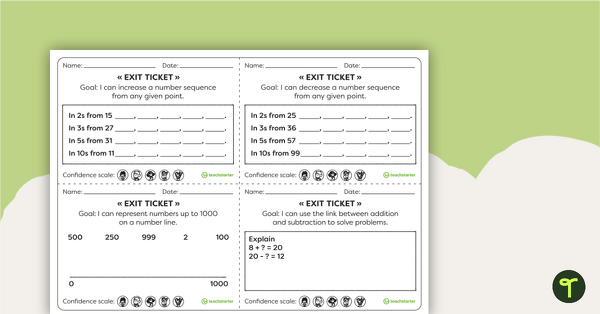
Year 2 Numeracy Exit Tickets – Worksheets
35 Numeracy Exit Ticket activities for students to provide evidence of their learning progress.
- Free Plan
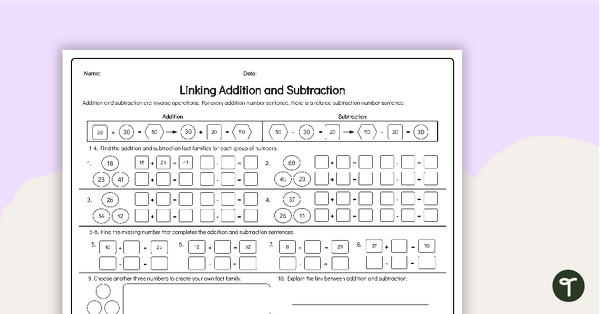
Linking Addition and Subtraction Worksheet
Explore the relationship between addition and subtraction with a fact family worksheet.
- Free Plan
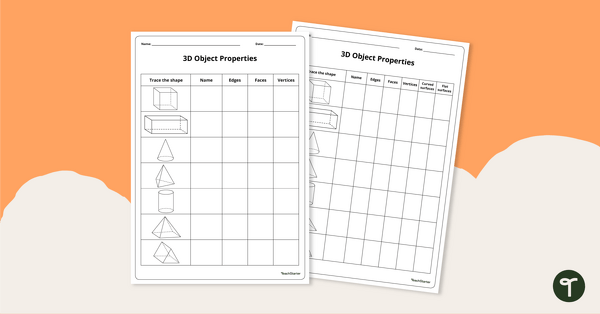
3D Object Properties - Worksheet
Use this 3D Objects Worksheet to assist your students when learning about the properties of 3D objects.
- Plus Plan
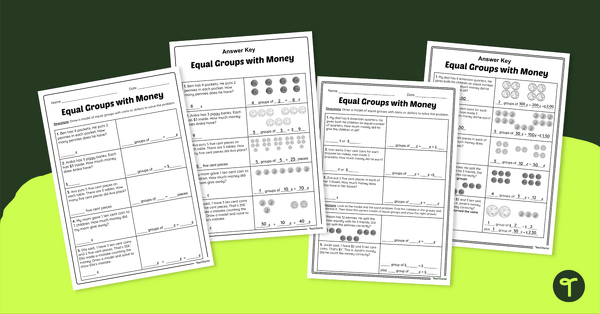
Multiplication Money Word Problems Worksheets
Create equal groupings to solve real-world scenarios with our multiplication money word problems worksheets.
- Plus Plan
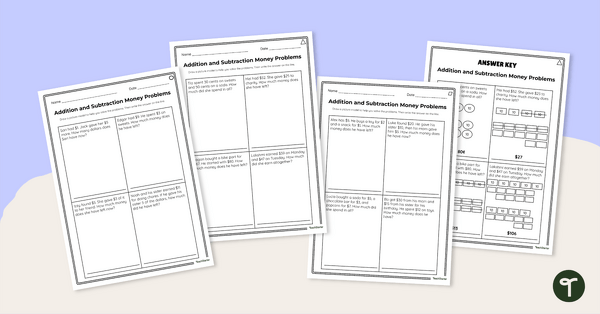
Money Addition and Subtraction Word Problems Worksheets
Use our money addition and subtraction word problems worksheets to give your students differentiated practice modelling a variety of one and two-digit word problems.
- Plus Plan
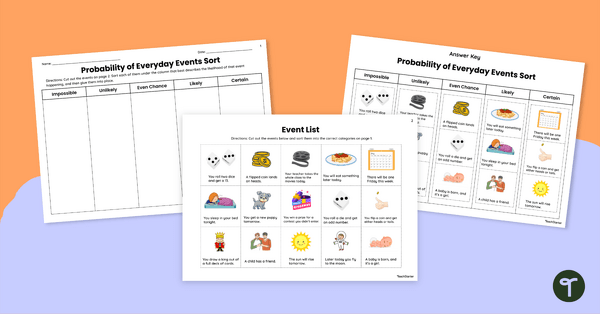
Probability of Everyday Events Sort
Share this probability of everyday events sort with your students to give them hands on practice identifying the likelihood of common events.
- Plus Plan
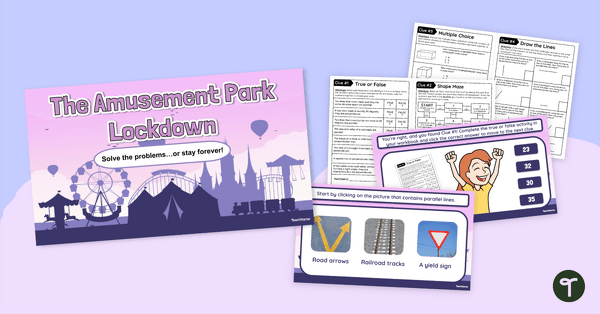
Parallel and Perpendicular Lines Activity — Escape Room
Engage your students with this parallel and perpendicular lines activity that encourages cooperation and problem solving to escape!
- Plus Plan

Telling the Time Bingo – Hour, Half-hour, Quarter To and Quarter Past
Play a few rounds of Telling the Time Bingo to practise telling the time to the quarter hours.
- Plus Plan
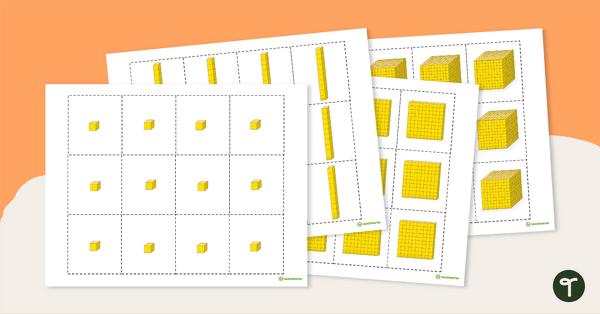
MAB Block Picture Cards
A set of MAB Block picture cards to use when exploring place value and partitioning numbers.
- Free Plan
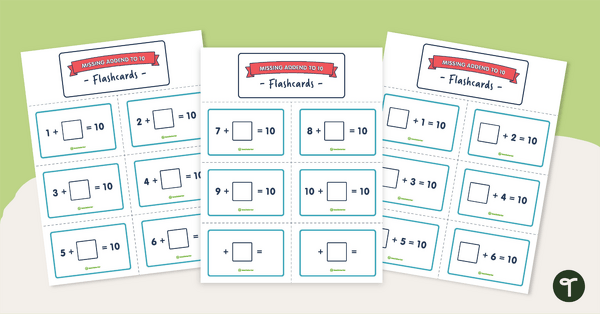
Missing Addends to 10 – Flashcards
Practise all the ways to make ten with this set of flashcards.
- Plus Plan
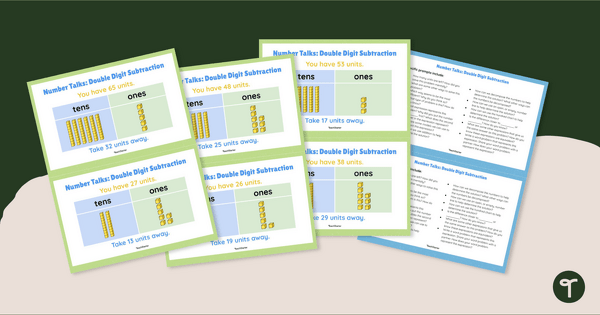
Number Talks - Double Digit Subtraction Task Cards
Encourage the use of mental math strategies with 2-digit subtraction number talks task cards.
- Plus Plan
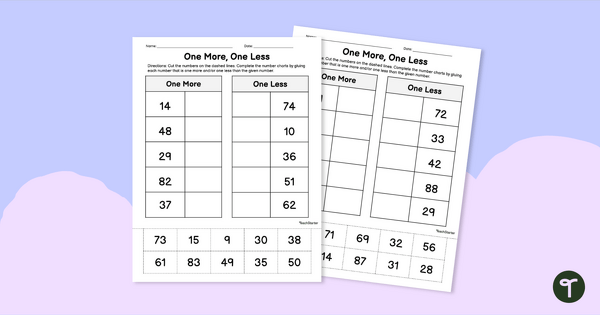
One More, One Less - Worksheet
Practise foundational addition and subtraction facts using the concepts of one more and one less.
- Plus Plan
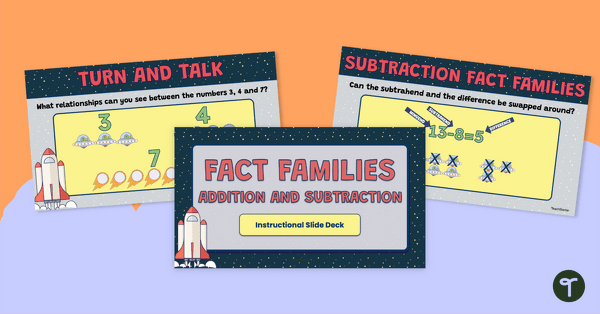
Addition and Subtraction Fact Families Teaching Presentation
A 19-page editable teaching presentation to use in the classroom when introducing addition and subtraction fact families.
- Plus Plan
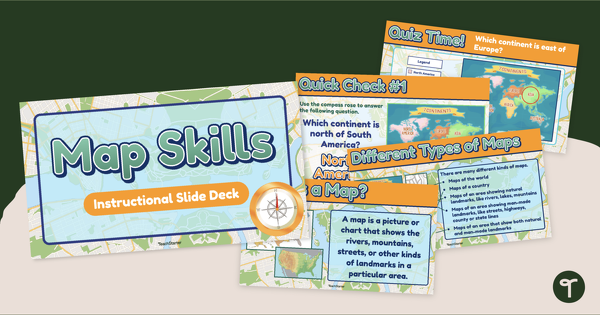
Map Skills Teaching Presentation
Teach basic map skills to younger students with this visually appealing and age-appropriate teaching presentation.
- Plus Plan
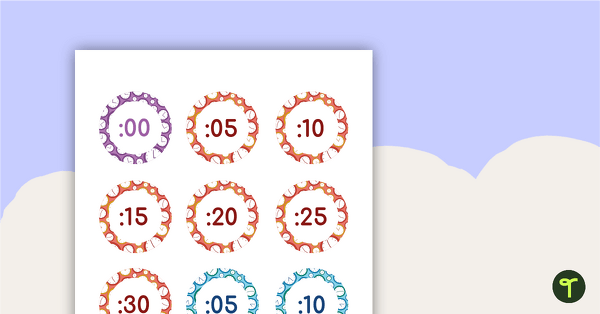
Clock Labels – 'Past' and 'To'
A template to display around your classroom clock that highlights 'past' and 'to' terminology.
- Free Plan
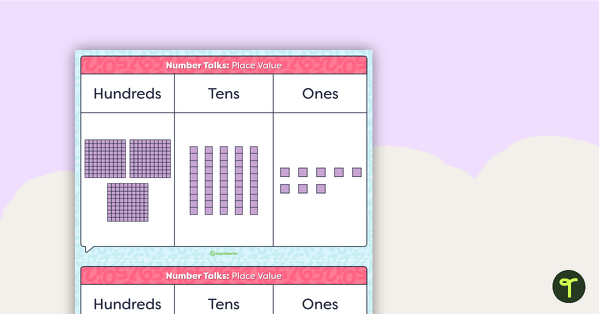
Number Talks - Place Value Task Cards
Build number sense skills in 3-digit skills with this set of 24 task cards.
- Plus Plan
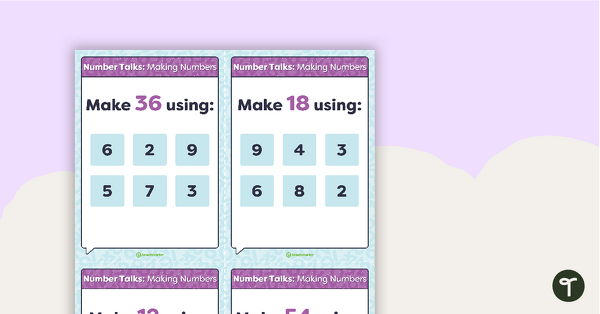
Number Talks - Making Numbers Task Cards
Build number sense skills with this set of 20 task cards.
- Plus Plan
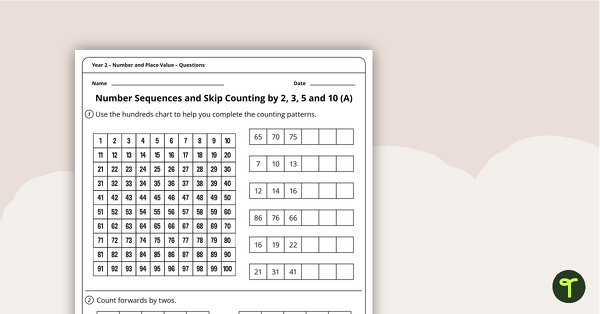
Number and Place Value Worksheets - Year 2
14 number worksheets linked to the Australian Curriculum.
- Plus Plan
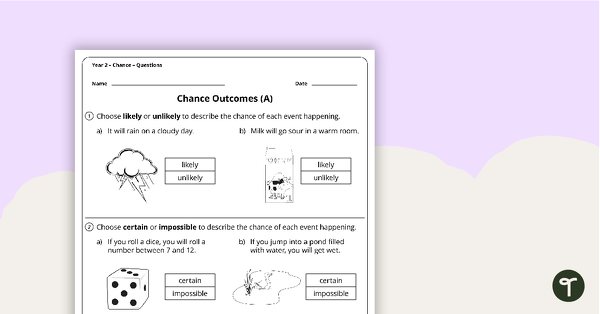
Chance Worksheets - Year 2
2 chance worksheets linked to the Australian Curriculum.
- Plus Plan
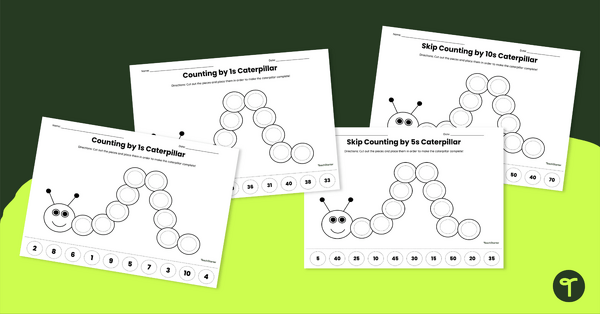
Skip Counting Caterpillar Worksheet Pack
Craft a Skip Counting Caterpillar with our printable skip counting cut and paste worksheets for year 1.
- Plus Plan
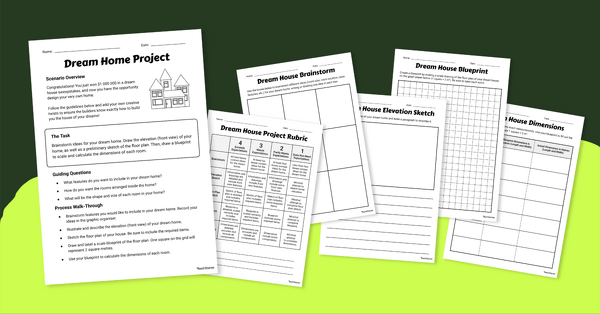
My Dream Home Project
Introduce our 'My Dream Home Project’ to your students to help them increase spatial skills while designing the house of their dreams!
- Plus Plan
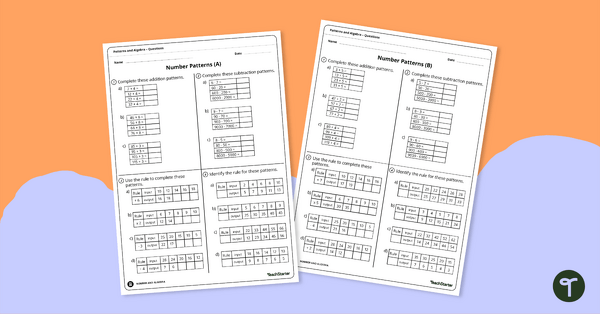
Number Patterns Year 3 Worksheet Set
Share our number patterns year 3 worksheet set with your students to give them practice with number patterns and algebraic relationships.
- Plus Plan
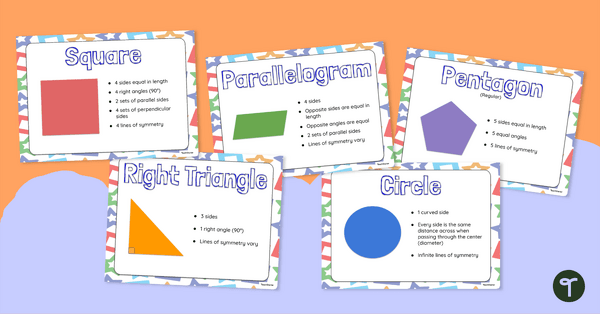
2D Shapes Poster Set
Hang this 2D shapes poster set in your classroom to give students an easy reference for the attributes of two dimensional shapes.
- Plus Plan
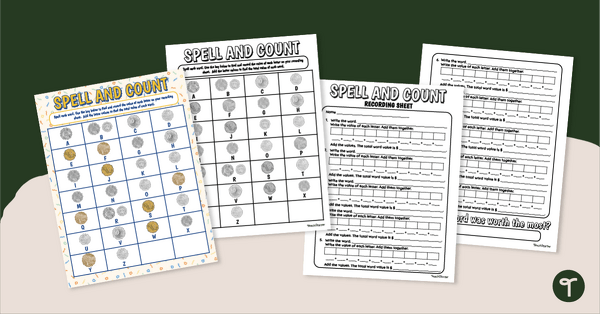
Spell and Count - Money Maths Activity
Develop spelling and money-counting skills simultaneously with a printable spelling and money maths centre activity.
- Plus Plan
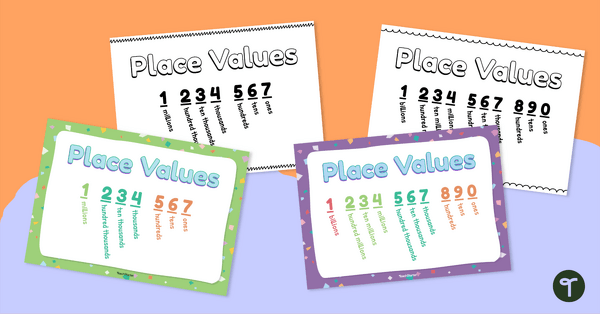
Place Value Poster Set — Whole Numbers
Display this colourful place value poster set in your classroom to remind your students of place values to the millions and billions.
- Plus Plan
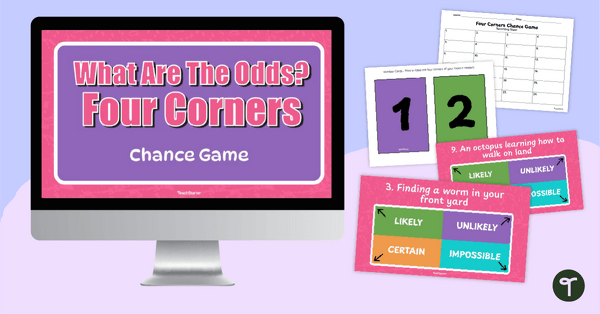
What Are The Odds? Digital Chance Game
Introduce your students to the concepts of probability and chance with an interactive ‘What Are The Odds?” Active Game?
- Free Plan
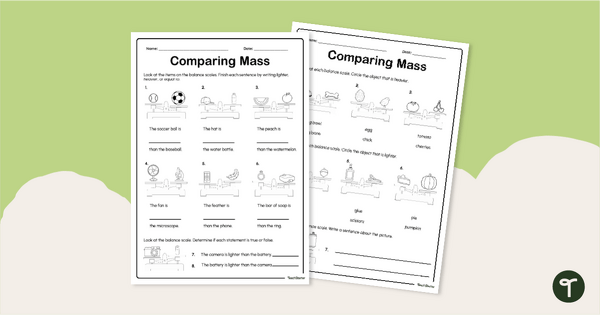
Comparing Mass With Balance Scales Worksheet
Practise comparing and contrasting the mass of objects as shown on balance scales with this set of mass measurement worksheets.
- Plus Plan
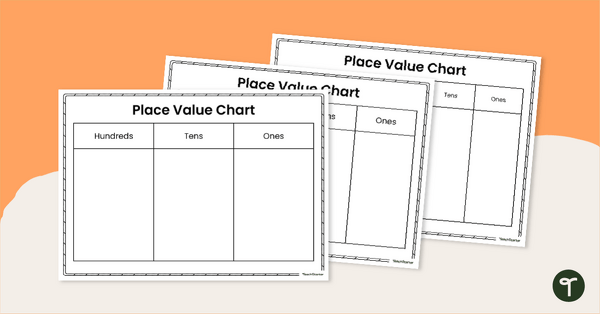
Place Value Charts
Practise place value knowledge up to 6 digits with these blank place value charts.
- Free Plan
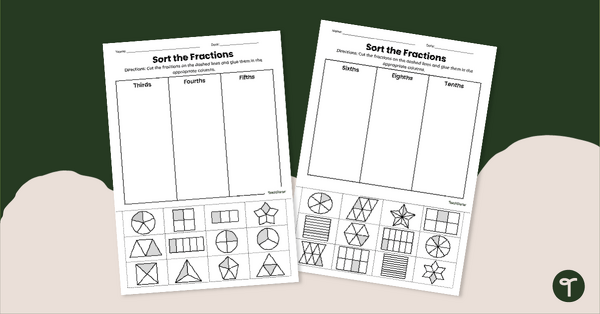
Sorting Unit Fractions Cut and Paste
Sort different unit fraction visualisations with these cut-and-paste unit fraction worksheets.
- Plus Plan
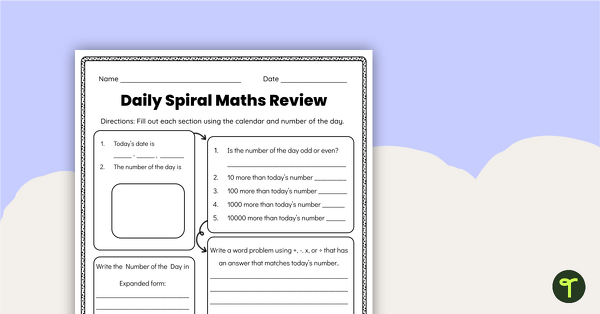
Daily Spiral Maths Worksheet (3-4)
Review a variety of place value and number sense standards with a daily spiral maths review worksheet.
- Plus Plan
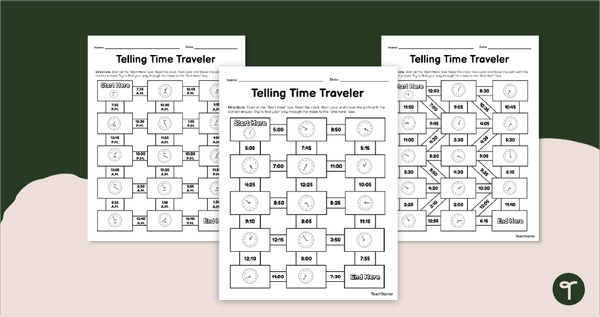
Telling Time Maths Mazes - 5 Minutes
Tell time to the nearest five-minute mark and make maths fun with a printable pack of Telling Time maths mazes.
- Plus Plan
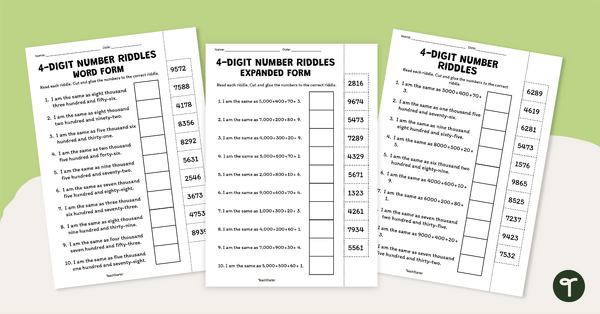
4-Digit Number Riddles Cut and Paste
Use these 4-digit number worksheets to help students practise matching numbers up to 10 000 with their word and expanded forms.